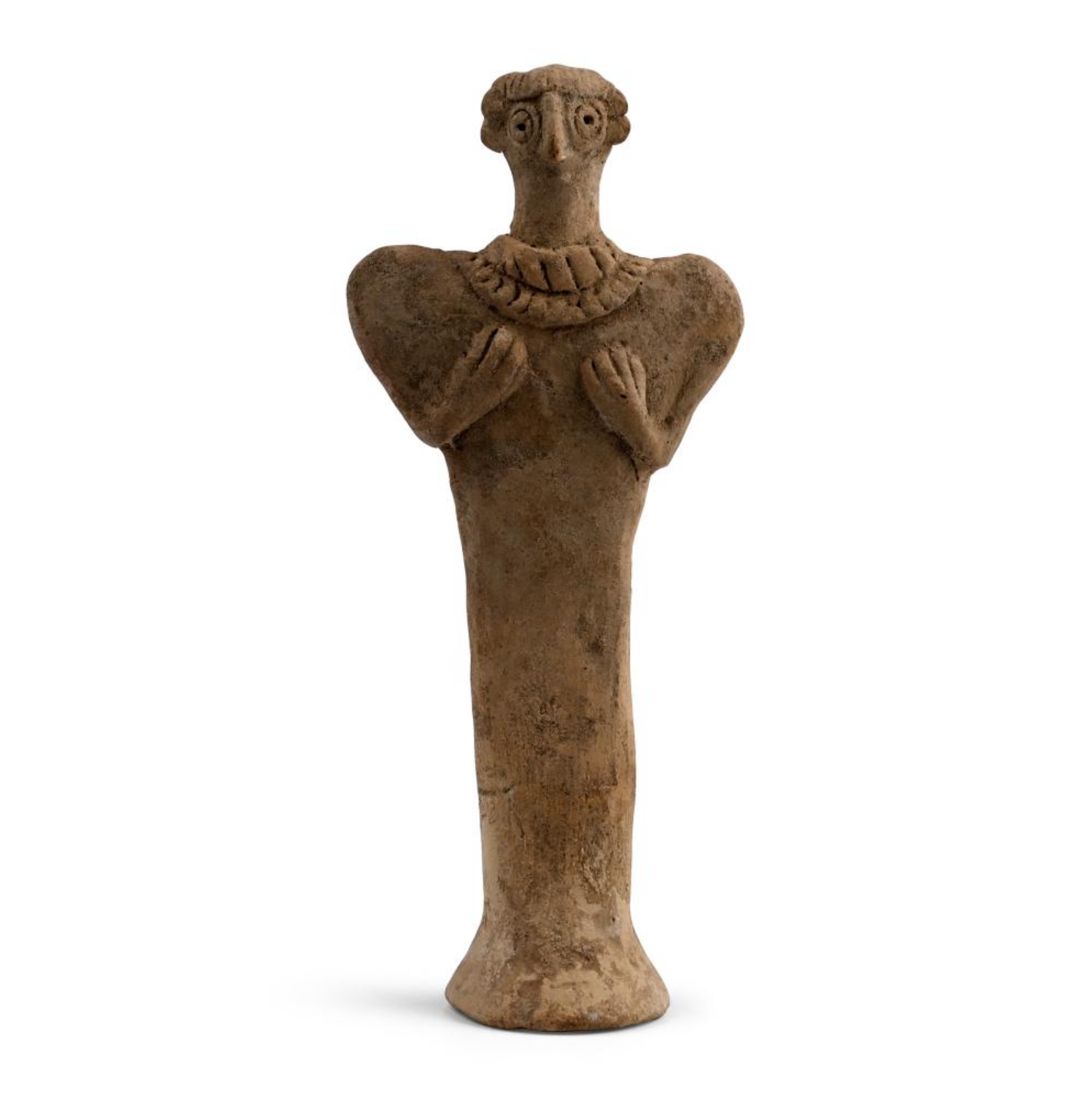Date
1500–900 B.C.
Dimensions
5 ½ in. (14 cm), 78 g
Material
Terracotta
Condition
Very Good – intact with minor chips.
Description
A finely modelled terracotta fertility figure depicting a standing female deity, often identified with Astarte, the Canaanite-Phoenician goddess of love, fertility, and protection. Shown with hands placed upon the chest in a gesture of life-giving power, wearing a long robe and broad necklace. Such votive figures were dedicated in homes and temples throughout the Syro-Levantine world as symbols of fertility, motherhood, and divine blessing.
Reference For Similar
Cf. Zahlhaas, G., Idole und Votive, München, 1993, p. 32, fig. 16.
Provenance
- Canadian gentleman’s collection (formed 1920s–1990s)
- By descent to Essex lady until the late 1990s
- Later private Essex gentleman’s collection, 1990s onwards
- London, September 2025
Authentication
Cleared by the Art Loss Register and Accompanied by illustrated lot declaration signed by Head of Antiquities Dr. Raffaele D’Amato.



